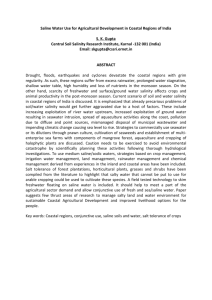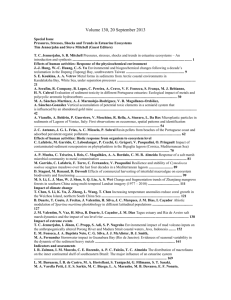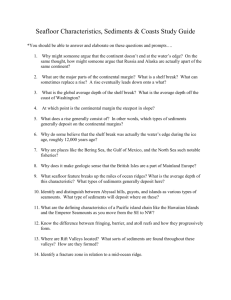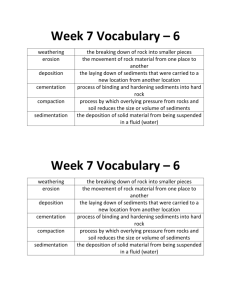Title: The Fate of Phosphorus Along Estuarine Salinity Gradients
advertisement
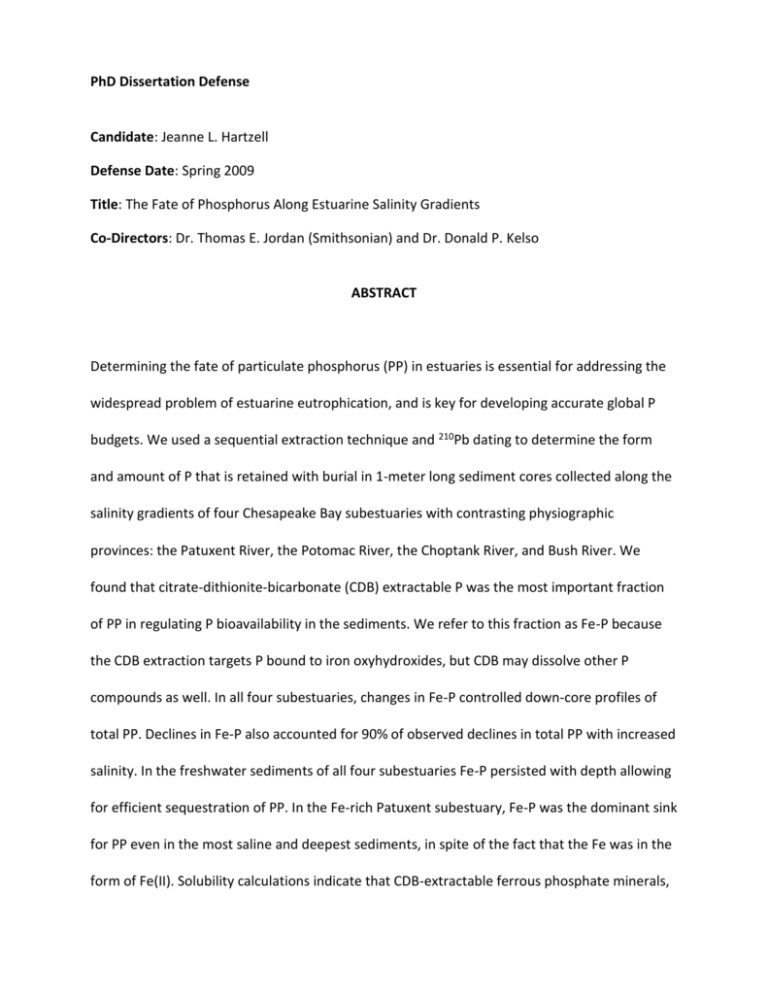
PhD Dissertation Defense Candidate: Jeanne L. Hartzell Defense Date: Spring 2009 Title: The Fate of Phosphorus Along Estuarine Salinity Gradients Co-Directors: Dr. Thomas E. Jordan (Smithsonian) and Dr. Donald P. Kelso ABSTRACT Determining the fate of particulate phosphorus (PP) in estuaries is essential for addressing the widespread problem of estuarine eutrophication, and is key for developing accurate global P budgets. We used a sequential extraction technique and 210Pb dating to determine the form and amount of P that is retained with burial in 1-meter long sediment cores collected along the salinity gradients of four Chesapeake Bay subestuaries with contrasting physiographic provinces: the Patuxent River, the Potomac River, the Choptank River, and Bush River. We found that citrate-dithionite-bicarbonate (CDB) extractable P was the most important fraction of PP in regulating P bioavailability in the sediments. We refer to this fraction as Fe-P because the CDB extraction targets P bound to iron oxyhydroxides, but CDB may dissolve other P compounds as well. In all four subestuaries, changes in Fe-P controlled down-core profiles of total PP. Declines in Fe-P also accounted for 90% of observed declines in total PP with increased salinity. In the freshwater sediments of all four subestuaries Fe-P persisted with depth allowing for efficient sequestration of PP. In the Fe-rich Patuxent subestuary, Fe-P was the dominant sink for PP even in the most saline and deepest sediments, in spite of the fact that the Fe was in the form of Fe(II). Solubility calculations indicate that CDB-extractable ferrous phosphate minerals, such as vivianite, may be sequestering P in the Patuxent. In contrast to the Patuxent, Fe-P concentrations declined to near zero with depth in the sediments of the most saline cores in the Potomac and Choptank, indicating that Fe-P is not a long-term sink for P in the saline portions of those subestuaries. Fe dynamics also controlled an increase in pore water PO 4 3concentrations along the salinity gradient of each subestuary affecting a shift in pore water N:P ratios from greater than 16 (the Redfield ratio) in the freshwater sites to less than 16 in the saline sites. The shift in the Redfield ratio occurred at remarkably similar salinities of 1 – 4 in each subestuary. Our findings indicate that Fe regulation of P can contribute to the generally observed switch from P limitation of primary production in freshwater to N limitation in mesohaline waters, and can control the long-term burial of PP in estuaries. Thus the amount and form of particulate Fe in estuarine sediments may be a key factor in controlling P bioavailability.
